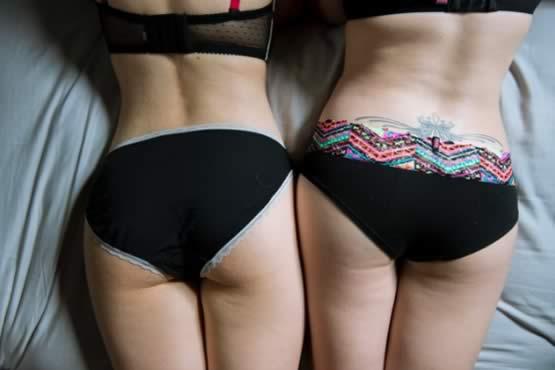
Butt Clenching: Understanding the Causes and Solutions
Heather Jeffcoat, DPT
As a physical therapist specializing in pelvic-floor physical therapy, it is crucial to address the issue of butt clenching, which can lead to various musculature issues and discomfort.
In this article, we will explore the different types of butt clenching, the reasons behind its occurrence, and effective strategies to overcome this habit.
Butt clenching refers to two distinct pelvic-floor positions known as “the true clench” and “butt tucking.” The true clench involves an overly contracted state of the glute muscles, while butt tucking refers to a posterior pelvic tilt.
“Having a pelvic tilt can contribute to the weakness of deep core muscles, causing other muscle groups like the glutes to overly engage to do the job.” – Heather Jeffcoat, DPT
These positions often occur simultaneously and can lead to a range of physical symptoms. Butt clenching is commonly caused by prolonged standing or sitting positions, incorrect exercise techniques, and as a protective response to trauma. It can result in back pain, urinary urgency, constipation, and painful penetration. However, butt clenching can be addressed through increased awareness, posture correction, warm-up exercises, yoga, and targeted attention to the glute muscles.
Causes of Butt Clenching
Prolonged standing or sitting positions: Individuals who spend long hours in static positions may develop a posterior pelvic tilt or a slumped-over posture. An example I mention in the article is when one’s core muscles are fatigued, they can begin to sit with their back rolled back toward their tailbone. Repetition of these positions leads to butt clenching.
Incorrect exercise techniques: Athletes who engage their core excessively during workouts may inadvertently clench their glute muscles, resulting in butt clenching.
Trauma response: In the article, I mention:
People can also begin butt clenching as a protective response to physical or emotional trauma.” Survivors of abuse or individuals who recently gave birth may exhibit butt clenching as a protective response to physical or emotional trauma.
Negative Effects of Butt Clenching
Muscular issues: Butt clenching can cause an overactive pelvic floor, leading to back pain, anterior hip or groin pain, and an increased risk of urinary urgency and frequency.
Altered movement patterns: Butt clenching can shorten the glute muscles and affect movement during activities such as sitting, walking, running, and hinging.
Identifying Butt Clenching
Self-assessment: Observing one’s posture from the side, checking for lower back curvature, locked knees and hips, and squeezing in the glutes can indicate butt clenching.
Clothing fit: Wrinkles or creases below the buttocks in non-workout attire may suggest butt clenching.
Strategies to Overcome Butt Clenching
“The first step to stop butt clenching is to increase your awareness of tension in this area. Even though it’s occurring subconsciously, once you are made aware, you can take steps to change it to reduce your pain and improve your daily and sexual function.” – Heather Jeffcoat, DPT
Consult a pelvic floor physical therapist: Working with a professional can help assess individual movement patterns, musculature, and symptoms to develop a personalized treatment plan.
Correct posture: Seeking guidance from a physical therapist specializing in postural alignment can improve standing posture, increase body awareness, and enhance hamstring and glute flexibility.
Warm-up exercises: Prioritize dynamic warm-up routines that activate and stretch the glutes, hamstrings, and hips before engaging in physical activity.
Yoga practice: Under the guidance of an experienced instructor, yoga can help reverse the effects of butt clenching by focusing on proper alignment and avoiding compensatory movements.
Mindful attention: Regularly bringing attention to the glute muscles and consciously releasing tension through specific exercises can help unlearn the habit of butt clenching.
Conclusion
Butt clenching, whether due to prolonged standing or sitting, incorrect exercise techniques, or trauma response, can lead to various musculoskeletal issues and discomfort. However, with increased awareness, posture correction, warm-up exercises, yoga, and targeted attention to the glute muscles, individuals can overcome this habit and alleviate associated symptoms. By working with pelvic-floor therapists and implementing the suggested strategies, individuals can improve their daily and sexual function while reducing pain and discomfort caused by butt clenching.
Our highly trained and caring group of pelvic health physical therapists at Femina Physical Therapy can help you on your journey to improve and strengthen these muscles – tailoring an exercise routine specific to your needs. Our therapists also assess your body as a whole and take into account other injuries or pain you may have to integrate into your routine. Connect with us today and initiate this empowering conversation!
